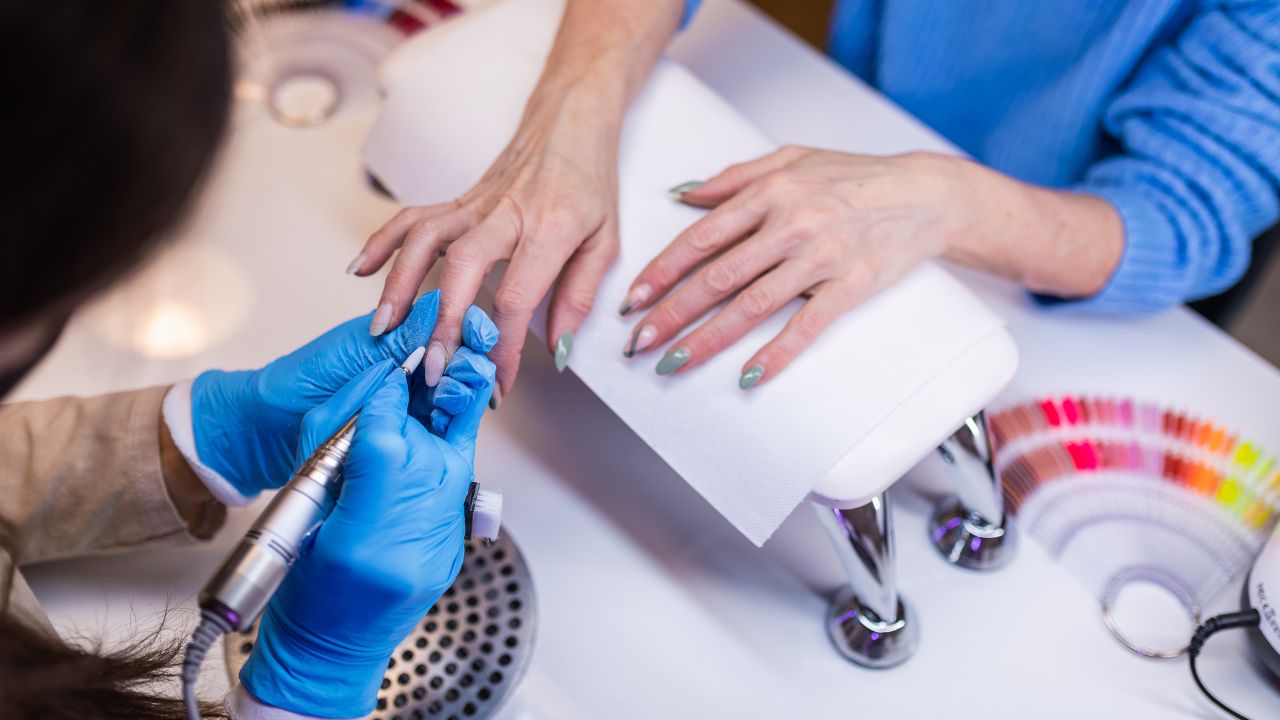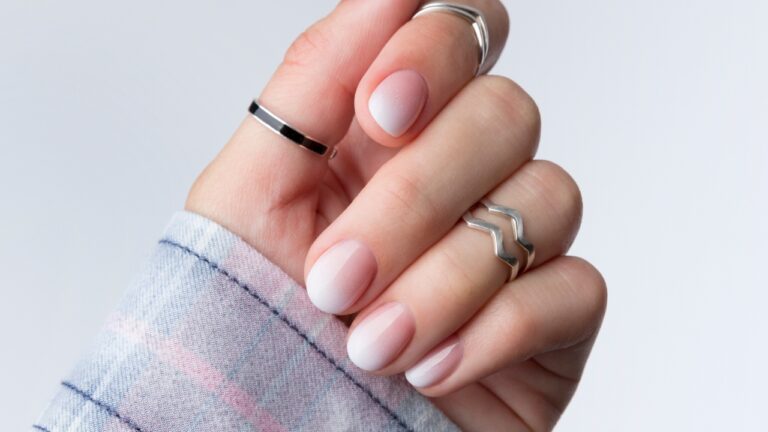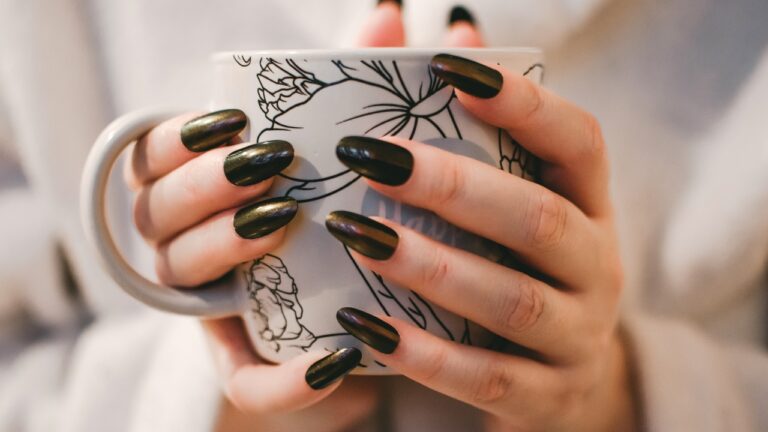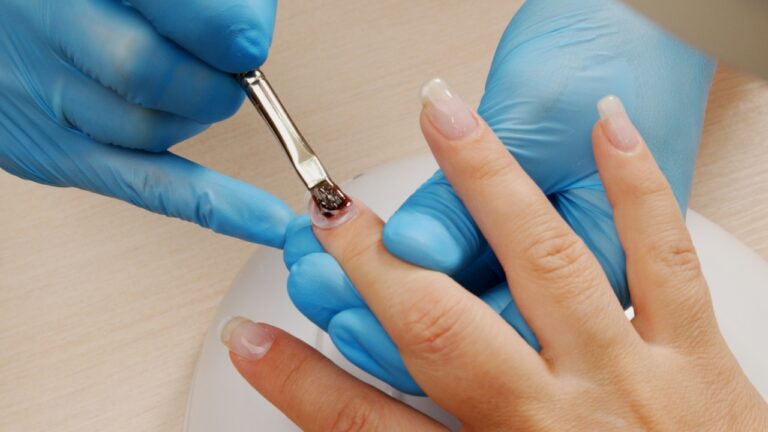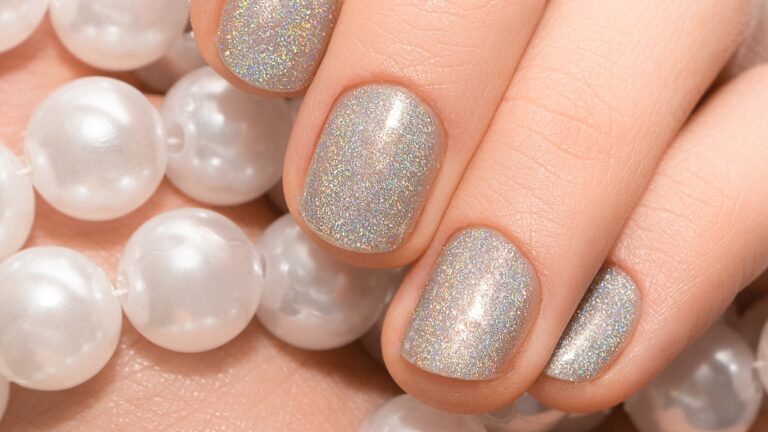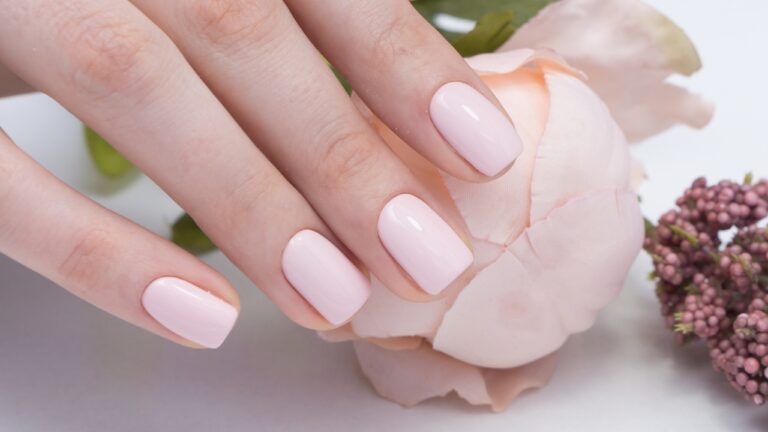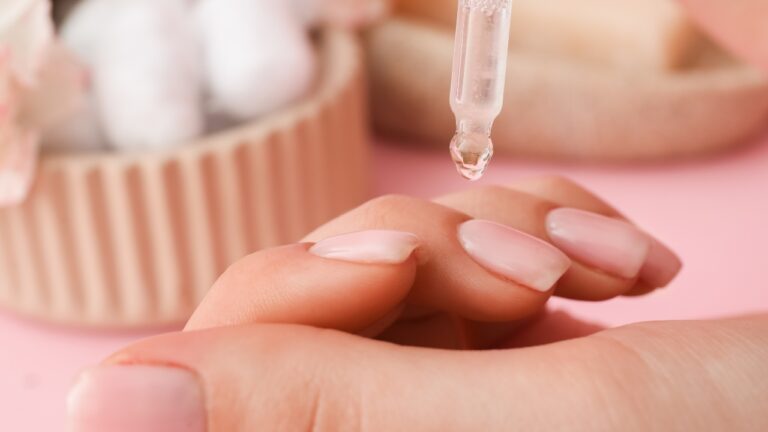Nail Tech Safety Guide: 19 Must Know Tips
Here is our nail tech safety guide for those already running a nail salon, or starting your manicurist journey.
Ensuring the safety and well-being of both nail technicians and clients is of paramount importance in the world of nail technology. To maintain a clean, hygienic, and secure environment, it’s crucial to adhere to a set of essential safety guidelines.
In this list, we’ll outline the must-know nail tech safety tips that every professional in the industry should be well-versed in.
Whether you’re a seasoned nail technician or just starting your career, these guidelines will help you create a safe and enjoyable experience for both yourself and your clients.
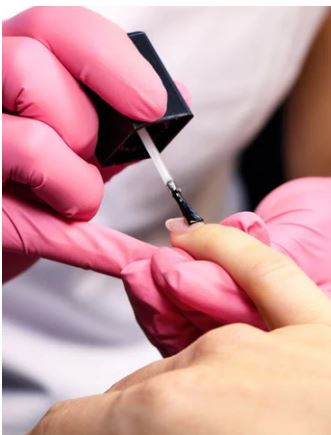
Mastering the art of nail technology not only involves creating beautiful and long-lasting nail designs but also prioritizing the safety and well-being of both nail technicians and clients.
In this compilation, we’ll delve into the essential nail tech safety tips and must-know information. These crucial guidelines will ensure a secure and satisfying experience for all involved.
Nail tech safety guide
1. Have Proper Ventilation
Maintain good airflow in your workspace to minimize exposure to fumes and dust. Use an air filtration system or open windows and doors.
Proper ventilation is a critical aspect of maintaining a safe and healthy working environment in a nail salon.
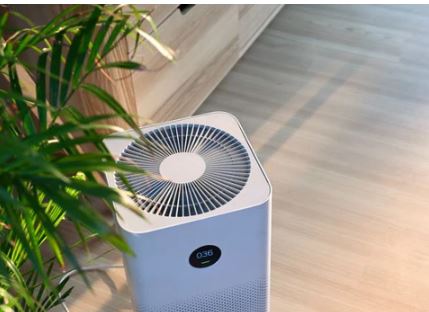
It involves the exchange of indoor air with fresh outdoor air, which helps to remove and dilute potentially harmful chemicals, fumes, and airborne particles produced during nail services. We have a an article about the best air purifiers for your salon or spa.
Here’s why proper ventilation is essential:
Fume Extraction:
Nail salons frequently use products like nail polish, nail polish remover, acrylic monomers, and adhesives, all of which release fumes that can be harmful if inhaled in high concentrations.
Proper ventilation helps to capture and remove these fumes from the salon, preventing them from accumulating in the breathing zone of nail technicians and clients.
Dust Control:
Nail filing, buffing, and shaping can generate fine dust particles that, if not properly ventilated, can lead to respiratory issues and can settle on surfaces throughout the salon.
Adequate ventilation systems help minimize the amount of airborne dust and ensure a cleaner, healthier workspace.
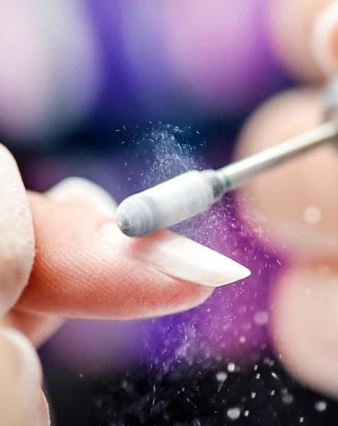
Chemical Exposure:
Nail technicians work with various chemicals that can irritate the respiratory system and skin. Proper ventilation reduces the risk of direct inhalation and skin contact with these substances.
Client Comfort:
Good ventilation not only protects the nail technician but also contributes to the overall comfort and well-being of clients. It ensures a fresh and pleasant environment, which can enhance the salon experience.
Compliance with Regulations:
Many regulatory bodies and health departments require nail salons to have adequate ventilation systems in place to maintain safety standards. Failure to comply with these regulations can result in fines and legal issues.
To achieve proper ventilation in a nail salon:
Use Mechanical Ventilation:
Install exhaust fans, air purifiers, or HVAC systems with high-efficiency particulate air (HEPA) filters to help remove pollutants and improve air quality.
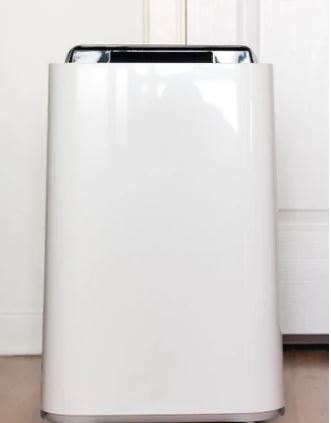
Open Windows and Doors:
Whenever possible, open doors and windows to allow fresh outdoor air to circulate through the salon, especially when using strong chemicals or performing tasks that generate dust.
Position Fans Strategically:
Place fans near the workspace to help direct fumes and dust toward ventilation systems or outdoor openings.
Regular Maintenance:
Ensure that ventilation systems are well-maintained and cleaned regularly to operate efficiently.
Use a nail dust collector:
You might be looking for a portable unit that can be easily moved around your nail studio, or a more powerful model that can be used for larger salons.
We have several suggestions that will be good for an at home studio or a nail salon. Best nail dust collectors for your nail salon. This is especially important when removing gel or acrylic dust. We have a helpful article to help learn the difference between acrylic and gel nails.
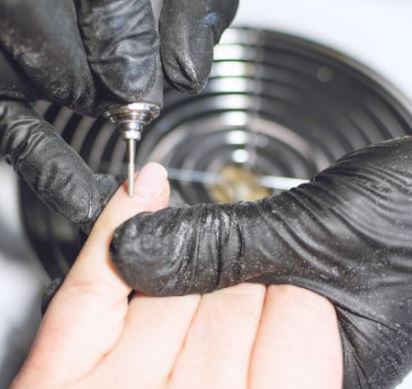
By prioritizing proper ventilation, nail technicians can create a safer, more comfortable, and healthier environment for themselves and their clients, reducing the risk of health issues associated with exposure to salon-related pollutants.
2. Hand Hygiene
Hand hygiene is a fundamental aspect of safety and hygiene in the nail salon industry. Wash hands thoroughly with soap and water before and after each client to prevent the spread of infections. Source: CDC proper hand washing.
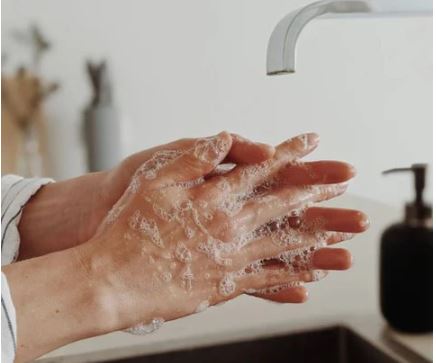
Nail technicians must maintain scrupulous hand hygiene to protect both themselves and their clients from the spread of infections.
Here’s key aspects of hand hygiene in nail salons:
Infection Prevention:
The primary purpose of hand hygiene is to prevent the transmission of bacteria, viruses, and other pathogens. Nail technicians come into close contact with clients’ hands and nails, making it crucial to ensure that their hands are clean to reduce the risk of infection.
Client Safety:
Clients trust nail technicians to provide safe and hygienic services. By practicing proper hand hygiene, technicians demonstrate their commitment to client safety and well-being.
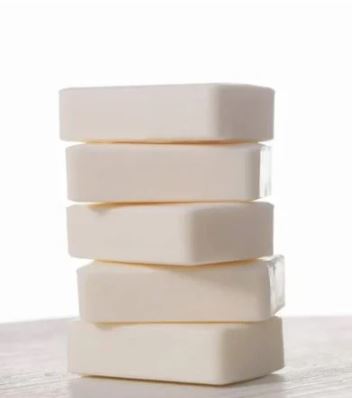
Technician Safety:
Nail technicians can also be at risk of contracting infections from clients. Proper hand hygiene not only protects clients but also safeguards the technician’s health.
Professionalism:
Maintaining clean and well-groomed hands is a sign of professionalism in the nail industry. Clients are more likely to return to a salon where they feel confident in the technician’s cleanliness and attention to hygiene.
Maintaining proper hand hygiene in a nail salon:
Hand Washing:
Wash hands thoroughly with soap and warm water for at least 30 seconds before and after each client. Pay special attention to the areas between the fingers and under the nails.
Nail Cleaning:
Technicians should keep their own nails short and clean to prevent the buildup of dirt and germs.
Hand Sanitizers:
Use an alcohol-based hand sanitizer with at least 60% alcohol when soap and water are not readily available. Apply it to all surfaces of the hands and rub until dry.
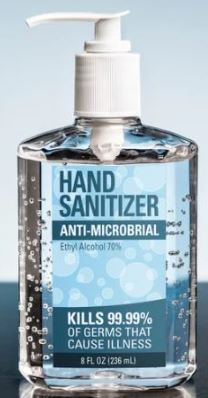
Avoidance of Contaminants:
Avoid touching your face, hair, or personal items (like cell phones) during nail services. These actions can introduce contaminants to your hands.
Regular Hand Moisturizing:
Frequent handwashing and the use of nail products can dry out the skin. Use hand moisturizers to keep their skin healthy and hydrated.
Nail Brush Usage:
Use a nail brush to clean under your own nails as part of your hand hygiene routine.
Education:
Educate all staff members on the importance of hand hygiene and proper techniques.
By following these hand hygiene practices consistently, nail technicians can maintain a clean and safe environment in their salons, reduce the risk of infections, and promote trust and confidence among their clients.
3. Proper Glove Usage
Glove usage is a fundamental safety practice in the nail salon industry, designed to protect both nail technicians and clients from potential contamination and the spread of infections.
Wear disposable gloves when handling chemicals, cleaning, or performing any nail services. Change them between clients. Ensure that the gloves have a nice snug fit.
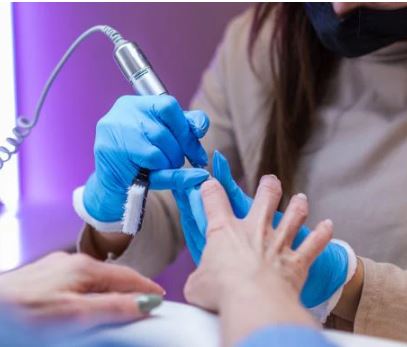
guidelines of glove usage in nail salons:
Barrier Against Contaminants:
Gloves act as a physical barrier between the technician’s hands and the client’s nails and skin. They help prevent direct contact with potentially harmful chemicals, bodily fluids, and microorganisms that may be present during nail services.
Infection Prevention:
Nail technicians come into contact with various clients throughout the day, each with unique health conditions and potential infections. Wearing gloves minimizes the risk of cross-contamination between clients and helps prevent the spread of infections.
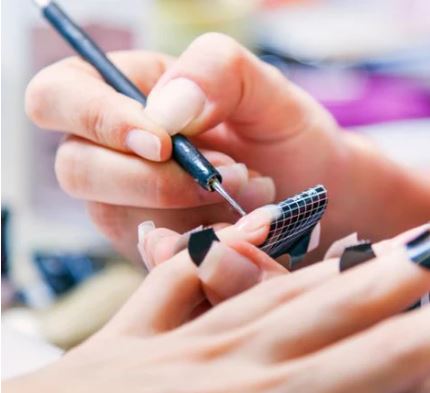
Allergen Protection:
Some nail technicians may have allergies to certain nail products, like acrylic monomers or gels. Gloves can provide protection against skin contact with these allergens.
Client Comfort:
Clients often appreciate the use of gloves as it can enhance their perception of cleanliness and professionalism in the salon. It can also reassure them that their health and well-being are being taken seriously.
Support your nail techs by starting them off right and using the proper gloves when working on clients. Take care of bad habits from the start.
To ensure effective glove usage in a nail salon:
Choose the Right Gloves:
Select disposable, latex-free, and powder-free gloves to reduce the risk of allergic reactions in both technicians and clients. Nitrile gloves are a common choice due to their durability and hypoallergenic properties.
Glove Change:
Change gloves between each client to avoid cross-contamination. Additionally, change gloves if they become torn or compromised during a service.
Proper Fit:
Gloves should fit snugly but comfortably to allow for dexterity and prevent tearing. Avoid gloves that are too tight or too loose. Framar Pink Paws Nitrile gloves comes in sizes from small to large.
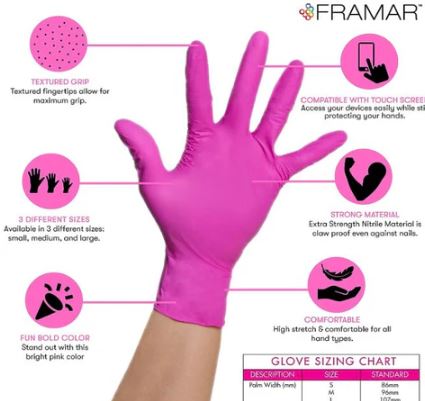
Glove Removal:
After each use, remove gloves carefully to prevent contamination of your hands. Avoid touching the outside of the gloves, and dispose of them in a designated waste container.
Hand Hygiene:
Perform hand hygiene (washing or using hand sanitizer) before putting on gloves and after removing them. This helps maintain overall hand cleanliness.
Education:
Train all nail salon staff on the correct use of gloves, including when and how to change them.
By following these practices, nail technicians can ensure that gloves are used effectively in the salon, providing an additional layer of protection for both themselves and their clients.
This not only maintains a hygienic and safe working environment but also promotes professionalism and client trust.
4. Disinfection of A Nail Salon
Proper disinfection is a crucial aspect of maintaining a clean and safe environment in a nail salon. Regularly work surfaces with hospital-grade disinfectants. This includes implements, countertops, and your nail tech station.
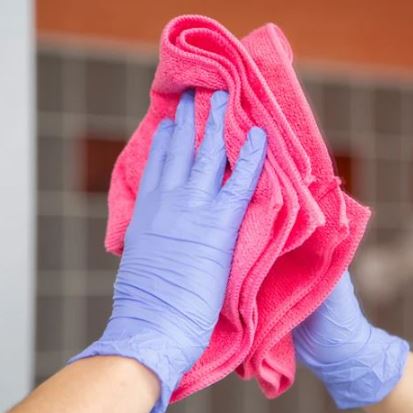
Disinfection helps prevent the spread of infections and ensures the well-being of both nail technicians and clients.
The importance of salon disinfection and the steps involved:
Infection Prevention:
Nail salons are places where numerous clients come into close contact with shared equipment and surfaces. Effective disinfection helps eliminate bacteria, viruses, and other pathogens that can cause infections and diseases.
Client Safety:
Clients expect a clean and hygienic environment when they visit a nail salon. Proper disinfection not only safeguards their health but also fosters trust and loyalty.
Technician Safety:
Nail technicians handle tools and equipment that can come into contact with bodily fluids and skin, making them susceptible to contamination. Disinfection protects technicians from potential infections.
We have a helpful article about how to disinfect metal salon tools.
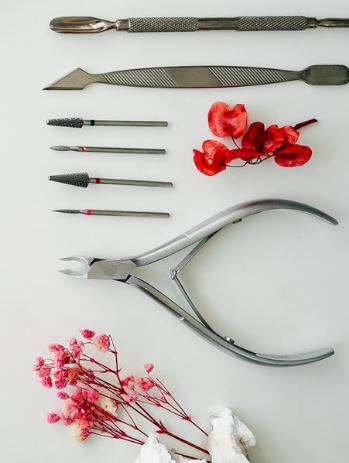
Steps for Proper Salon Disinfection:
Pre-Cleaning:
Before disinfection, remove all visible debris, dust, and residues from surfaces and tools. Use a soft brush or cloth to clean items such as nail files, implements, and workstation surfaces.
Use EPA-Registered Disinfectants:
Select disinfectants that are specifically designed for salon use. These disinfectants are proven to be effective against a wide range of pathogens.
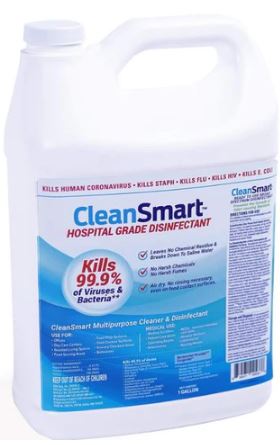
Follow Manufacturer’s Instructions:
Always follow the manufacturer’s instructions for dilution ratios, contact times, and usage guidelines. Using the correct concentration is essential for effectiveness.
Disinfect All Surfaces:
Pay special attention to high-touch surfaces such as countertops, nail stations, light switches, and door handles. Disinfect all non-porous surfaces, including chairs, pedicure tubs, and trays.
Disinfect Non-Reusable Items:
Dispose of single-use items such as nail files, buffers, and orange sticks after each client. For reusable items like towels, wash them in hot water with detergent and bleach.
Regular Cleaning Schedule:
Develop a cleaning schedule and checklist to ensure that all surfaces and tools are disinfected after each use and at the end of each day.
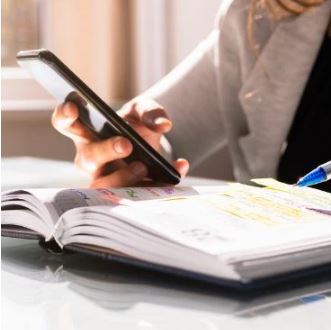
Hand Hygiene:
Nail technicians should practice proper hand hygiene by washing their hands with soap and water before and after each client and using hand sanitizer as needed.
Personal Protective Equipment (PPE):
Technicians should wear disposable gloves and masks when handling chemicals and disinfectants and change them between clients.
Education and Training
Provide ongoing training to salon staff on proper disinfection procedures and ensure they understand the importance of compliance.
Record Keeping:
Maintain detailed records of when and how disinfection procedures are performed. This can be useful for both regulatory compliance and client reassurance.
By implementing thorough and consistent disinfection practices, nail salons can create a clean and safe environment for clients and technicians alike, promoting a positive reputation and ensuring the overall well-being of everyone involved.
5. Tool Sterilization
Use an autoclave or chemical sterilization to ensure that metal implements are free from pathogens.
Tool sterilization is a critical process in nail salons to ensure the safety and hygiene of both nail technicians and clients.
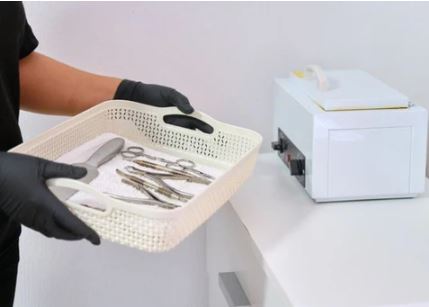
Sterilization is particularly important for reusable metal implements like nail clippers, nippers, and cuticle pushers.
Importance of tool sterilization:
Infection Prevention:
Nail tools that come into contact with clients’ skin and nails can potentially harbor bacteria, fungi, and viruses. Sterilization effectively kills these pathogens, reducing the risk of infections.
Client Safety:
Clients trust nail salons to provide safe and hygienic services. Proper tool sterilization demonstrates a commitment to client health and safety.
Technician Safety:
Nail technicians themselves can be at risk of contracting infections if they come into contact with contaminated tools. Sterilization protects the technicians’ health as well.
Methods of tool sterilization:
Autoclave:
Autoclaving is one of the most effective methods of sterilization. It uses high-pressure steam to kill microorganisms.
Metal implements are placed in a heat-resistant pouch or container and then subjected to high temperatures (usually around 121-132°C or 250-270°F) for a specific duration (typically 15-30 minutes).
Autoclaves for salons are widely used in medical and dental settings and are suitable for nail salons with appropriate equipment.
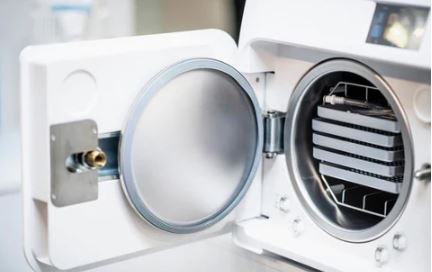
Chemical Sterilization:
Chemical sterilization involves immersing metal implements in a high-level disinfectant or sterilizing solution for a specified time. These solutions often contain chemicals like glutaraldehyde or hydrogen peroxide.
Follow the manufacturer’s guidelines for the concentration and contact time. After sterilization, thoroughly rinse and dry the tools.
Dry Heat Sterilization:
Some nail salons use dry heat sterilizers to sterilize metal tools. These devices use high temperatures (around 160-180°C or 320-356°F) to kill microorganisms.
Tools are typically placed in a sterilization pouch or container and subjected to dry heat for a specified period.
Dry Heat Sterilizers On Amazon
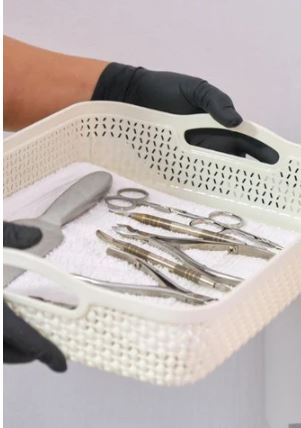
Ultraviolet (UV) Sterilization:
UV sterilization cabinets use ultraviolet light to kill bacteria and viruses on the surface of tools.
While they may not be as effective as autoclaves or chemical sterilization for complete sterilization, they can be used as an additional step for disinfection.
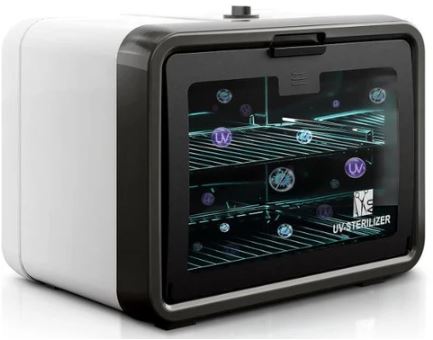
Best practices for tool sterilization:
Clean Tools Before Sterilization:
Remove all visible debris, dirt, and nail product residues from the tools before sterilization. This ensures that the sterilization process is more effective.
Use Appropriate Containers:
When using chemical sterilization or dry heat methods, place tools in sterilization pouches or containers designed for this purpose.
Follow Manufacturer’s Instructions:
Always follow the manufacturer’s guidelines for the sterilization equipment and chemical solutions. Pay attention to recommended temperatures, contact times, and other specific instructions.
Regular Monitoring and Maintenance:
Maintain sterilization equipment regularly to ensure it is functioning correctly. Monitor sterilization cycles and keep records of sterilization dates and procedures.
Proper tool sterilization is a fundamental practice in nail salons to uphold safety and hygiene standards.
Nail technicians should be well-trained in these sterilization methods and consistently follow them to provide a safe and clean environment for their clients.
6. Single Use Items in a nail salon
Dispose of single-use items like nail files, buffers, and orange sticks after each client.
Single-use items are disposable products used in nail salons that are designed for one-time use and should be discarded after each client.
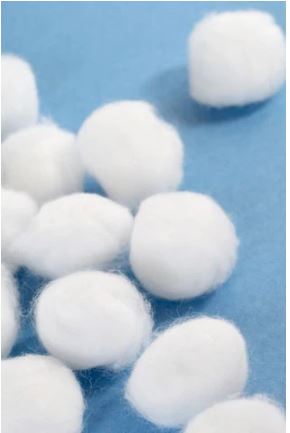
These items are essential for maintaining high levels of hygiene and preventing cross-contamination between clients.
Importance of single-use items and some common examples:
Infection Control:
Single-use items, when used correctly, significantly reduce the risk of spreading infections between clients. Since they are discarded after each use, there is no chance of contamination from a previous client.
Client Safety:
Clients expect and deserve a safe and sanitary environment when receiving nail services. The use of single-use items helps maintain client safety and instills trust in the salon’s professionalism.
Convenience:
Single-use items are convenient and save time. There’s no need for extensive cleaning and sterilization after each use, which can be time-consuming and may lead to scheduling delays.
Common Examples of Single-Use Items in Nail Salons:
Orange Sticks and Cuticle Pushers:
Wooden or disposable plastic orange sticks and cuticle pushers are used for cuticle care and should be thrown away after each client.
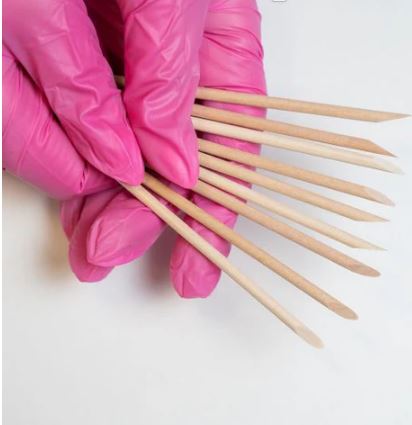
Nail Files and Buffers:
Emery boards, disposable nail files, and buffer blocks should be used only once and then discarded. These items can’t be adequately sterilized for reuse.
Toe Separators:
Foam or disposable toe separators are used during pedicures to prevent toes from touching each other. They should not be reused between clients.
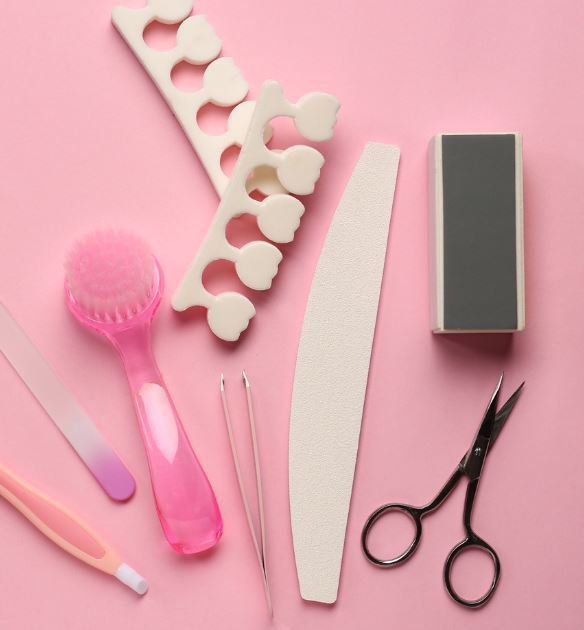
Disposable Gloves:
Gloves, typically made of latex or nitrile, should be used for each client and disposed of after the service. Changing gloves between clients helps prevent cross-contamination.
Cotton Balls and Pads:
Cotton balls or pads are often used for removing nail polish or applying acetone. Use them once and discard them.
Disposable Pedicure Liners:
Pedicure chairs often use disposable plastic liners that cover the footbath to prevent direct contact with clients’ feet. These liners should be changed for each client.
Disposable Slippers:
Disposable slippers or sandals are provided to clients during pedicures to prevent them from walking barefoot in the salon. Clients can take these home or discard them after use.
Best practices for single-use items:
Storage:
Store single-use items in a clean, dry area away from potential contaminants.
Discard Properly:
After use, place single-use items in designated waste containers to ensure they are properly disposed of.
Quantity Management:
Ensure an adequate supply of single-use items is readily available to avoid reusing them by mistake.
Educate Staff:
Train salon staff on the importance of using single-use items correctly and ensure they understand the difference between single-use and reusable tools.
By incorporating single-use items into your salon’s protocols and ensuring they are used and disposed of correctly, you can maintain a high standard of hygiene, prioritize client safety, and uphold the reputation of your salon.
7. Nail Salon Client Consultation
Ask clients about allergies, skin conditions, and any history of nail infections to avoid complications during the service.
Client consultation is a fundamental step in the nail salon industry that involves communication between the nail technician and the client before any nail service begins.
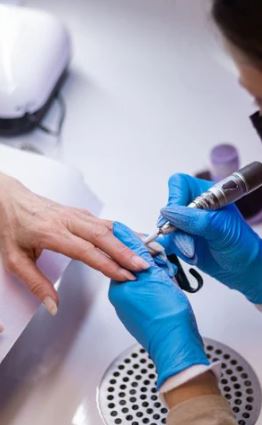
It serves various crucial purposes and contributes to the overall safety, satisfaction, and success of the service.
Importance of a client consultation:
Safety:
Client consultation is vital for identifying any potential health issues, allergies, or contraindications that may affect the nail service. This information allows the technician to make informed decisions and take necessary precautions to ensure the client’s safety.
Customization:
Understanding the client’s preferences, nail goals, and style preferences helps tailor the service to their specific needs. This customization enhances the client’s satisfaction and builds trust.
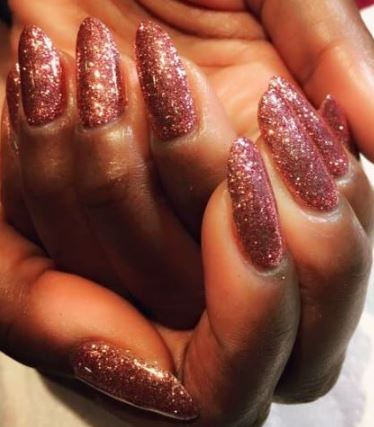
Client Education:
Consultation provides an opportunity to educate the client about proper nail care, aftercare, and maintenance. Educated clients are more likely to take good care of their nails and have realistic expectations about the service.
Professionalism:
A thorough and attentive consultation demonstrates professionalism and competence to the client. It instills confidence and trust in the technician’s abilities.
Key aspects of a client consultation:
Allergies:
Inquire about allergies, especially those related to nail products like acrylic, gel, or nail polish. Allergies can lead to adverse reactions and should be taken seriously.
Previous Nail Services:
Ask about the client’s history of nail services and any issues they may have had in the past. This can help address concerns and tailor the service to their needs.

Nail Goals:
Understand the client’s expectations and what they hope to achieve with the nail service. This information guides the technician in selecting appropriate products and techniques.
Style and Preferences:
Discuss the client’s preferred nail style, shape, length, and color. Show them nail swatches or pictures to confirm their choices.
Aftercare:
Explain proper aftercare practices and maintenance routines to the client. Provide recommendations for nail care products and tools they can use at home.
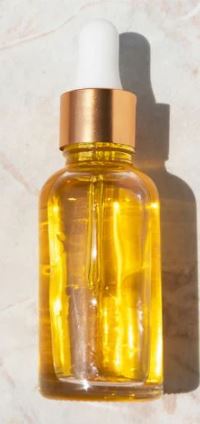
Budget:
If necessary, discuss the client’s budget to ensure that the recommended service and products align with their financial expectations.
Communication:
Ensure open and clear communication throughout the consultation. Address any questions or concerns the client may have and make sure they understand the process.
Documentation:
Maintain records of client consultations, including their preferences, allergies, and any special notes. This information can be invaluable for future appointments and reference.
See our helpful article about the best planners for nail technicians.
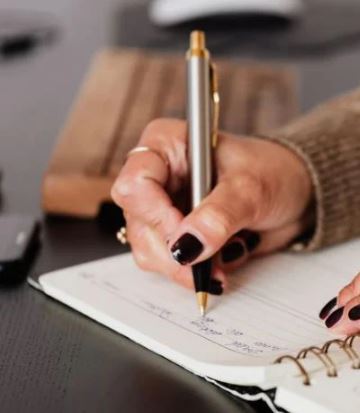
Informed Consent:
Before beginning the service, obtain the client’s informed consent, especially if there are any potential risks or contraindications.
Follow-Up:
After the service, follow up with the client to ensure their satisfaction and address any post-service concerns or questions.
A well-executed client consultation sets the stage for a successful nail service. It demonstrates professionalism, prioritizes safety, and enhances the client’s overall salon experience.
By taking the time to understand the client’s needs and preferences, nail technicians can provide a personalized and satisfying service that encourages client loyalty and referrals.
8. Chemical Safety
Handle chemicals like acrylic monomer and acetone with care. Keep them away from open flames and wear appropriate protective gear.
Chemical safety is a paramount concern in the nail salon industry due to the use of various chemicals and products in nail services.
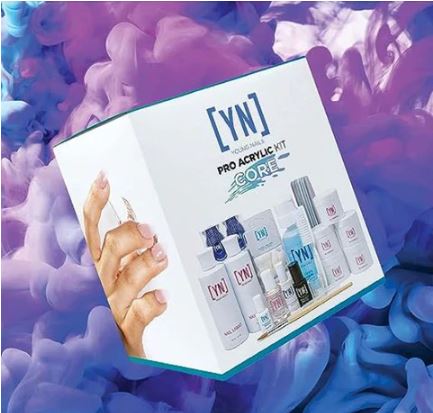
Nail technicians must be well-informed about chemical safety to protect themselves, their clients, and maintain a safe work environment.
Importance of chemical safety:
Health Protection:
Many nail products contain chemicals that can be harmful if not handled properly. Chemical safety measures help protect nail technicians from skin, respiratory, and eye irritations, as well as long-term health issues.
Client Safety:
Proper chemical safety practices ensure that clients are not exposed to unnecessary risks. This includes minimizing the inhalation of fumes and preventing skin contact with potentially harmful substances.
Regulatory Compliance:
Nail salons are subject to health and safety regulations, which often include guidelines for the safe handling and storage of chemicals. Adhering to these regulations is not only a legal requirement but also essential for client and technician safety.
Key considerations for chemical safety:
Product Knowledge:
Nail technicians should thoroughly understand the chemicals in the products they use, including nail polishes, adhesives, acrylic monomers, and disinfectants. Review product labels, safety data sheets (SDS), and manufacturer instructions.
Ventilation:
Ensure adequate ventilation in the salon to minimize the buildup of fumes and dust. Use exhaust fans, air purifiers, or open windows and doors to maintain good airflow.
Personal Protective Equipment (PPE):
Wear appropriate PPE, such as disposable gloves, safety goggles, and face masks, when handling chemicals and performing nail services.
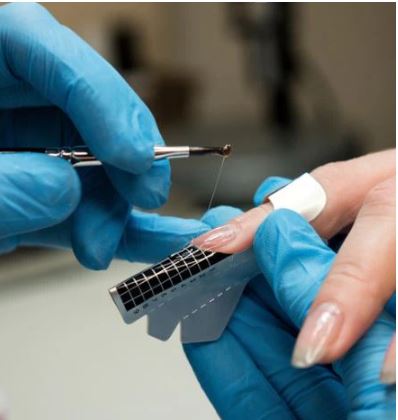
Storage:
Store nail products in a well-ventilated, cool, and dry area, away from direct sunlight and heat sources. Keep products in their original containers with labels intact.
Labeling:
Clearly label containers with chemicals to prevent accidental misuse. Use color-coded labels or other systems to differentiate between products.
Handling and Mixing:
Follow manufacturer guidelines when handling, mixing, or diluting chemicals. Avoid contact with skin and eyes, and never mix chemicals unless specified by the manufacturer.
Spill Response:
Have spill response kits on hand to quickly and safely address chemical spills. Follow appropriate procedures for containment, cleanup, and disposal.
Chemical Disposal:
Dispose of chemicals and chemical waste in accordance with local regulations. Do not pour chemicals down the drain unless approved by authorities.
Skin Protection:
Apply barrier creams to your hands before working with chemicals to minimize skin contact or use nitrile gloves. Wash hands thoroughly after handling chemicals.
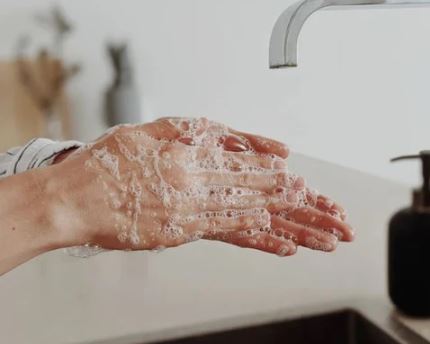
Training:
Ensure that all salon staff are trained in chemical safety practices, including proper handling, storage, and emergency response.
Regular Maintenance:
Inspect and maintain equipment like exhaust fans and air filtration systems to ensure they are functioning correctly.
Emergency Preparedness:
Have emergency eyewash stations, first aid kits, and fire extinguishers readily available in case of accidents.
By prioritizing chemical safety in nail salons, nail technicians can create a safer working environment, protect their own health, and provide a secure and pleasant experience for their clients.
Staying informed about chemical hazards and consistently practicing safe handling techniques is crucial for the well-being of everyone involved.
9. Emergency Preparedness
Emergency preparedness is a critical aspect of safety in any nail salon. Being well-prepared for emergencies helps protect the well-being of both nail technicians and clients.
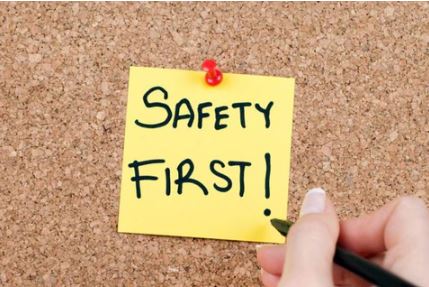
Here’s an elaboration on the importance of emergency preparedness and key components to consider:
Importance of emergency preparedness:
Safety:
Emergency preparedness measures ensure the safety of everyone in the salon. It allows for a quick and organized response to accidents or unexpected events.
Minimize Damage:
Being prepared can minimize the extent of damage or injuries that may occur during an emergency situation.
Compliance:
Nail salons are often subject to health and safety regulations, and many of these regulations require the establishment of emergency response plans and the availability of safety equipment.
Key components of emergency preparedness in nail salons:
Emergency Contact Information:
Maintain a list of essential emergency contacts, including local authorities, poison control, the nearest hospital, and fire and police departments. Ensure that all staff members are aware of these contact numbers.
First Aid Kit:
Have a well-stocked first aid kit readily available. Ensure that it includes items such as bandages, antiseptic wipes, adhesive tape, scissors, tweezers, and other essential medical supplies.
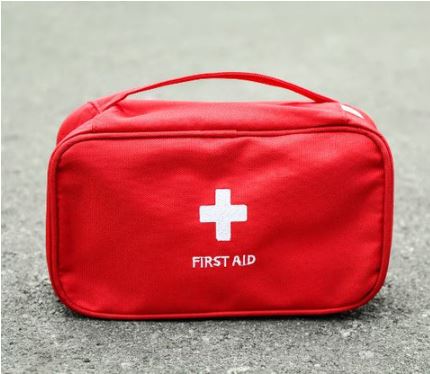
Eyewash Station:
An eyewash station is essential for flushing eyes in case of chemical splashes or eye irritations. It should be easily accessible and clearly marked.
Fire Extinguishers:
Nail salons should have fire extinguishers on hand, and they should be regularly inspected and maintained. Ensure that staff members are trained in how to use them.
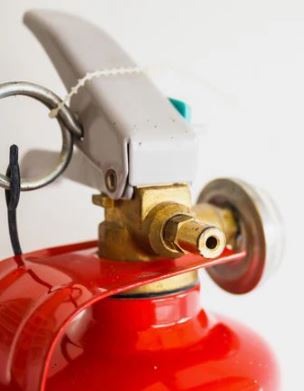
Emergency Evacuation Plan:
Develop and practice an emergency evacuation plan with all staff members. Identify primary and secondary exits and establish designated assembly areas outside the salon.
Emergency Lighting:
In case of power outages, have emergency lighting available to ensure visibility and safety during evacuations.
Emergency Procedures Manual:
Create an emergency procedures manual that outlines specific responses to various emergencies, including fires, chemical spills, medical incidents, and natural disasters. Provide copies to all staff members and ensure they understand the procedures.
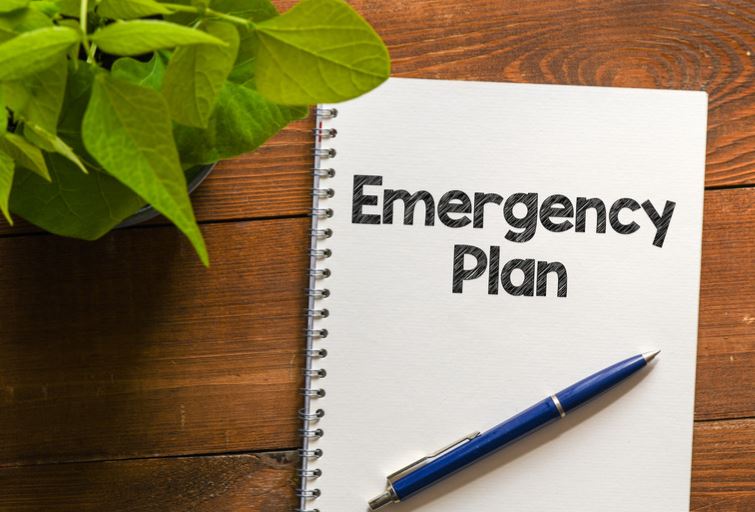
Regular Drills:
Conduct regular emergency drills to ensure that all staff members are familiar with the procedures and can respond effectively in a real emergency situation.
Security Measures:
Implement security measures such as locks on doors, surveillance cameras, and alarm systems to deter and respond to potential security threats.
Chemical Spill Kits:
Have chemical spill kits on hand for quick response to chemical spills. These kits should include absorbent materials, gloves, goggles, and instructions for safe cleanup.
Client Communication:
Establish a clear communication protocol to inform clients about emergency procedures and ensure their safety during emergencies.
Documentation:
Maintain records of emergency drills, incidents, and responses for reference and future improvement.
Training:
Ensure that all staff members receive training on emergency preparedness and response. Provide regular refresher training to keep skills up to date.
By having a comprehensive emergency preparedness plan in place, nail salons can minimize the impact of unexpected events, protect the safety of everyone on the premises, and demonstrate a commitment to the well-being of both staff and clients.
Preparedness measures are essential for maintaining a safe and secure salon environment.
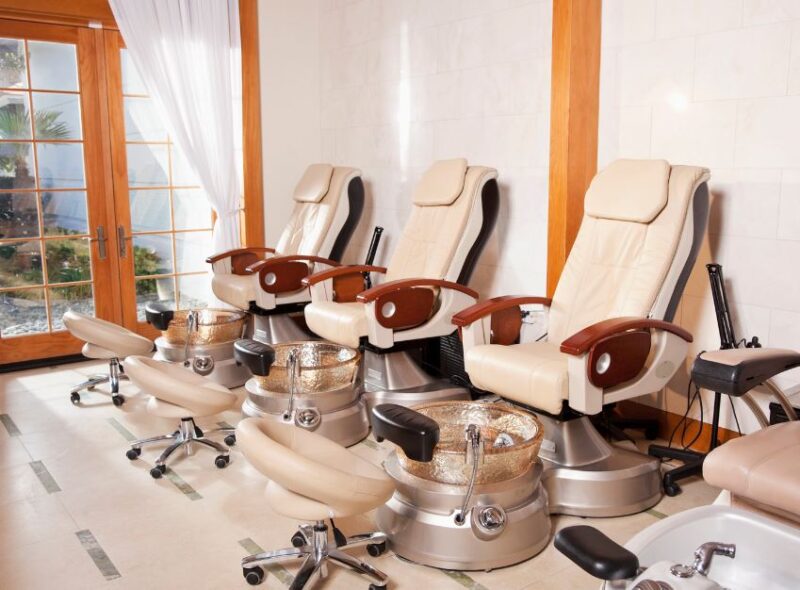
10. Personal Protective Equipment (PPE)
Personal Protective Equipment (PPE) plays a crucial role in ensuring the safety and well-being of nail technicians in the salon industry.
PPE comprises various items worn or used to minimize exposure to hazards and reduce the risk of injury or illness. Here’s an elaboration on the importance of PPE in nail salons and key aspects to consider.
Importance of personal protective equipment (PPE):
Safety:
The primary purpose of PPE is to protect nail technicians from potential health and safety hazards in the workplace. It serves as a barrier between the technician and harmful substances, sharp objects, and contaminants.
Health Protection:
PPE safeguards the health of nail technicians by reducing the risk of skin irritations, allergic reactions, respiratory issues, and injuries that may result from exposure to chemicals and equipment.
Client Safety:
PPE also plays a role in client safety. It helps prevent the transmission of infections and diseases from technicians to clients and vice versa.
Key components of PPE in nail salons:
Disposable Gloves:
Disposable nitrile gloves protect the hands from contact with chemicals, pathogens, and potentially allergenic nail products. Technicians should change gloves between clients and when handling different tasks.
Safety Goggles or Face Shields:
Safety goggles or face shields protect the eyes from chemical splashes, nail dust, and flying debris generated during nail services. Did you know that a little piece of acrylic can fly into your eye or a clients eye while filing?
Face Masks:
Face masks help filter the air technicians breathe, reducing inhalation of fumes, dust, and airborne particles. They are particularly important for maintaining air quality in the salon. A client should be officered a mask, especially during the filing and removing process of acrylic and gels.
Aprons or Salon Lab Coats:
Aprons or lab coats protect clothing from chemical spills and help prevent contamination. They should be changed regularly and washed as needed.
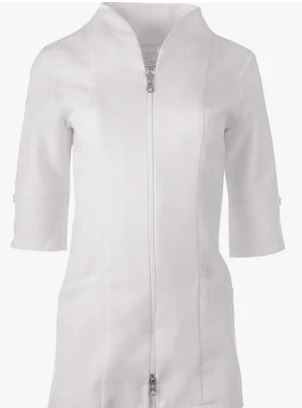
Closed-Toe Shoes:
Closed-toe shoes with non-slip soles provide foot protection and help prevent slips and falls. Open-toed shoes are not suitable for nail technicians due to the risk of chemical exposure and injury.
Hand Sanitizer:
Hand sanitizer should be readily available for hand hygiene when soap and water are not easily accessible.
Nail Dust Collector:
While not worn on the body, a nail dust collector is essential for maintaining air quality and reducing the inhalation of fine nail dust and particles.
Best practices for PPE usage:
Select PPE that is appropriate
Ensure PPE fits properly and is comfortable to wear to encourage consistent use. Train salon staff on the correct donning, doffing, and disposal of PPE.
PPE Inspections
Regularly inspect and maintain PPE to ensure it is in good condition and effective.
Compliance
Encourage a culture of PPE compliance and make it a non-negotiable practice among salon staff.
Education
Provide education and awareness about the importance of PPE to all employees.
Updates & knowledge
Stay updated on industry standards and regulations related to PPE usage and adapt practices accordingly.
By incorporating proper PPE usage into their daily routines, nail technicians can create a safer working environment, protect their health, and ensure the well-being of both themselves and their clients.
PPE is a critical component of a comprehensive approach to safety in nail salons.
11. Avoid Skin Contact
Minimize skin contact with chemicals by using barrier creams and nitrile gloves on your hands before starting a service.
Avoiding skin contact is a fundamental aspect of safety in nail salons. Nail technicians often work with various chemicals and products that can be harmful to the skin.
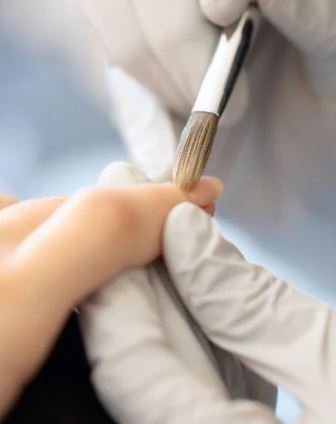
Importance of avoiding skin contact:
Prevent Skin Irritation:
Many nail products, such as acrylic monomers, gels, and adhesives, contain chemicals that can cause skin irritation, redness, itching, and even allergic reactions. Avoiding skin contact minimizes the risk of these issues.
Allergen Protection:
Some nail technicians may develop allergies to certain nail products over time. Preventing skin contact with these products is crucial in reducing the risk of sensitization and allergic reactions.
Infection Prevention:
To maintain hygiene and prevent the spread of infections, it’s important to avoid direct skin contact with clients’ nails and skin during nail services.
Key considerations for avoiding skin contact:
Use Disposable Gloves:
Disposable nitrile gloves should be worn whenever handling nail products or performing nail services. Gloves provide a barrier between the skin and chemicals, reducing the risk of contact dermatitis and allergic reactions.
Glove Selection:
Choose gloves that fit well and are appropriate for the specific task. Ensure that gloves are changed between clients and when handling different products to prevent cross-contamination.
Glove Removal:
When removing gloves, do so carefully to avoid touching the outside of the gloves, which may be contaminated. Dispose of gloves properly.
Barrier Creams:
Some nail technicians apply barrier creams to their hands before putting on gloves. This additional layer of protection can help prevent skin contact with chemicals.
Proper Technique:
Use proper techniques when applying and removing nail products. Avoid spills and drips that could come into contact with the skin.
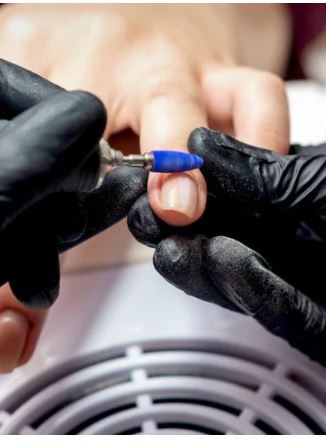
Hand Washing:
Wash hands thoroughly with soap and water after removing gloves, before eating or drinking, and after using the restroom. Hand washing is essential for removing any residue that may have come into contact with the skin.
Skin Patch Testing:
If a technician or client has a history of skin sensitivities or allergies, consider performing a patch test with new products to check for adverse reactions before a full application.
Allergy Awareness:
Nail technicians should be aware of the symptoms of skin allergies and sensitivities and seek medical attention if they experience any signs of skin irritation or allergy.
Client Safety:
Educate clients about the importance of avoiding skin contact with their nails after a service and encourage them to wash their hands thoroughly if they accidentally touch their nails.
By diligently following these guidelines and practicing proper techniques, nail technicians can minimize the risk of skin contact with potentially harmful substances, protect their skin, and maintain a safe and healthy work environment for both themselves and their clients.
Skin protection is a fundamental component of overall safety in nail salons.
12. Proper Storage of salon supplies
Proper storage is a critical aspect of safety and organization in nail salons. It involves the careful handling, storage, and maintenance of various products, tools, and equipment to ensure they remain effective, safe, and in compliance with regulations.
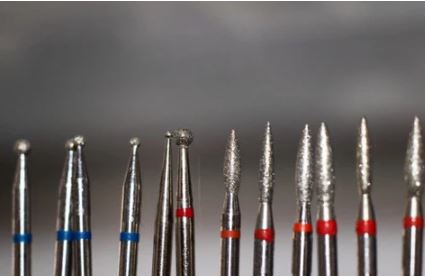
Store chemicals, polishes, and other nail products in a well-ventilated area away from direct sunlight and heat sources.
importance of proper storage
Safety:
Proper storage helps prevent accidents, spills, and chemical exposures. It minimizes the risk of fires, injuries, and health hazards associated with the use of nail products and equipment.
Product Integrity:
Storing nail products correctly preserves their quality and extends their shelf life. This ensures that products perform as intended and are safe to use on clients.
Regulatory Compliance:
Nail salons are often subject to health and safety regulations that include guidelines for the safe storage of chemicals, equipment, and records. Complying with these regulations is essential to avoid fines and penalties.
Key considerations for proper storage in nail salons:
Chemical Storage:
- Store nail products in a well-ventilated, cool, and dry area, away from direct sunlight and heat sources.
- Keep products in their original containers with labels intact. Labels provide essential information about the product’s composition, hazards, and usage instructions.
- Segregate and store chemicals according to compatibility. For example, flammable products should be stored away from heat sources and oxidizing agents.
- Use secure storage cabinets or shelving units to prevent spills and accidents. Ensure that these storage areas are labeled for easy identification of products.
Tool and Equipment Storage:
- Properly clean and disinfect tools and equipment after each use before storing them to prevent cross-contamination.
- Store tools in containers or drawers designed to keep them clean and organized. Ensure they are dry before storing to prevent rust or damage.
- Keep electrical equipment, such as UV lamps or electric nail files, in good working condition. Store them in a safe, dry place and inspect cords regularly for signs of wear or damage.
Personal Protective Equipment (PPE):
- Store PPE, such as disposable gloves, safety goggles, and face masks, in a clean and easily accessible location.
- Ensure that PPE is free from damage and contaminants before use.
Cleanliness and Organization:
- Maintain a clean and organized workspace. Regularly clean countertops, workstations, and storage areas to prevent dust, dirt, and product buildup.
- Dispose of expired or unusable products in accordance with local regulations.
- Keep an inventory of products and tools to track usage and reorder supplies as needed.
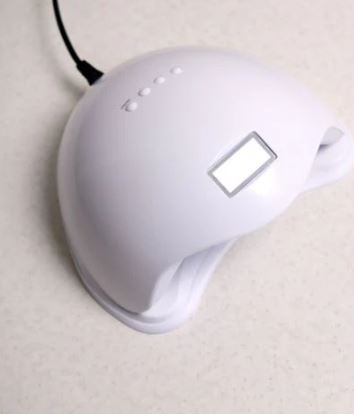
Records and Documentation:
Store records, including client consultation forms, product purchase invoices, and safety data sheets (SDS), in a secure and organized manner. Ensure that they are readily accessible for reference and regulatory compliance.
Fire Safety:
- Ensure that fire extinguishers are located in accessible areas, regularly inspected, and maintained.
- Avoid storing flammable materials near ignition sources and ensure proper ventilation in storage areas.
By following these storage guidelines, nail salons can maintain a safe and organized working environment, extend the life of products and equipment, and ensure compliance with regulations.
Proper storage practices contribute to the overall safety and professionalism of the salon, benefitting both technicians and clients.
13. Sharps Disposal
Proper disposal of sharps is a critical aspect of safety and infection control in nail salons. Sharps refer to items that can puncture or cut the skin, such as razor blades.
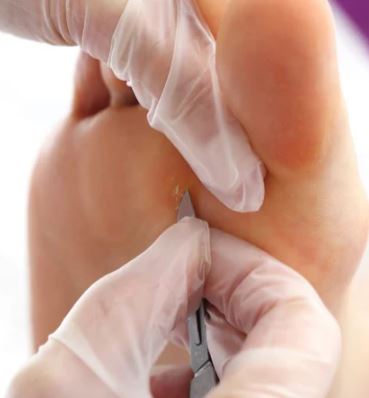
Nail technicians use various sharp implements during services, and it’s crucial to handle and dispose of them safely to prevent injuries and the spread of infections.
Importance of sharps disposal:
Injury Prevention:
Sharps can cause puncture wounds and cuts, which may lead to infections or injuries. Proper disposal minimizes the risk of accidents and potential harm to technicians and clients.
Infection Control:
Sharps can come into contact with blood or bodily fluids, creating a risk of infection transmission. Safe disposal procedures help prevent the spread of diseases.
Regulatory Compliance:
Nail salons are often subject to regulations that require proper disposal of sharps to protect public health and safety. Compliance with these regulations is essential to avoid fines and legal repercussions.
Key considerations for sharps disposal in nail salons:
Sharps Containers:
- Use designated sharps containers for the disposal of sharp implements. These containers are specifically designed to prevent accidental needlestick injuries and to safely contain sharps until they can be disposed of properly.
- Ensure that sharps containers are made of puncture-resistant materials and have a secure, tamper-proof lid to prevent spills or accidental access.
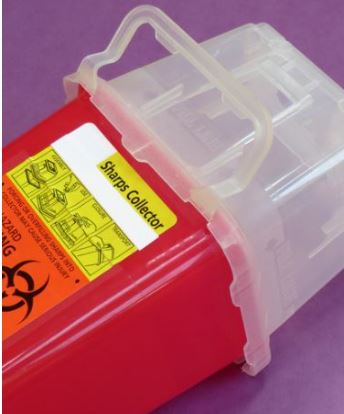
Placement and Accessibility:
- Position sharps containers in convenient locations within the salon to encourage proper disposal. Place them close to workstations where sharps are commonly used.
- Make sure that containers are easily accessible to all staff members but out of reach of clients and other unauthorized individuals.
Disposal Procedures:
- Instruct technicians to immediately place used sharps directly into the designated sharps container after use.
- Encourage staff members to exercise caution when handling and disposing of sharps to prevent accidental injuries.
Disposal Guidelines:
- Follow local regulations and guidelines for sharps disposal, which may include sealing and labeling containers before disposal.
- Do not overfill sharps containers. When they are two-thirds full, they should be sealed and replaced with a new container.
Transportation and Disposal Services:
- Arrange for proper disposal services for filled sharps containers. Contact a medical waste disposal company or local healthcare facility that accepts sharps waste for disposal.
- Ensure that the disposal service adheres to safety and environmental regulations and provides documentation of proper disposal.
Training and Education:
- Train all salon staff in sharps disposal procedures and safety measures. Regularly update training to reinforce safe practices.
- Educate staff about the potential risks associated with sharps and the importance of following disposal protocols.
By implementing proper sharps disposal procedures in nail salons, technicians can minimize the risk of accidents, protect themselves and clients from infection transmission, and ensure regulatory compliance.
Maintaining a safe and hygienic environment is essential for the well-being of everyone in the salon.
14. Education and Training
Education and training are crucial elements in maintaining safety and professionalism in the nail salon industry.
Properly educated and trained nail technicians not only provide high-quality services but also ensure the well-being of clients and themselves.
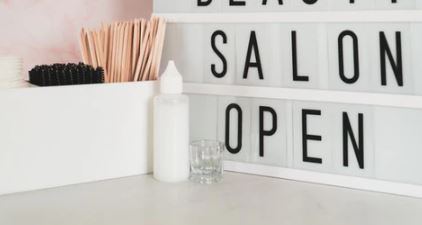
Stay up-to-date with the latest techniques and safety procedures through continuing education and certification programs.
Importance of education and training in nail salons to consider:
Safety:
Education and training equip nail technicians with the knowledge and skills needed to perform services safely. This includes understanding the potential hazards of chemicals, tools, and equipment, as well as proper safety procedures.
Quality of Service:
Proper education and training lead to the delivery of high-quality nail services. Technicians learn the latest techniques, trends, and best practices, enhancing the client experience and satisfaction.
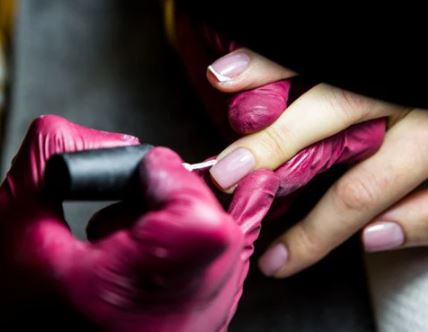
Client Trust:
Clients are more likely to trust and return to a salon with well-trained technicians. Demonstrating professionalism and expertise builds a positive reputation and loyal clientele.
Regulatory Compliance:
Many regions have licensing and certification requirements for nail technicians. Education and training programs help nail technicians meet these regulatory standards.
education and training in nail salons:
Formal Education:
Enroll in accredited nail technician programs, which provide comprehensive education on nail care, hygiene, safety, and sanitation. These programs often include practical training and classroom instruction.
Continuing Education:
Stay updated with the latest industry trends, techniques, and safety protocols through continuing education courses and workshops. Many states and regions require ongoing education to maintain licensure.
Product Knowledge:
Nail technicians should have a deep understanding of the products they use, including nail polishes, acrylics and gels. They should be aware of chemical compositions and safety data sheets (SDS). Gel sets may have the sds sheets included in their products or on their website.
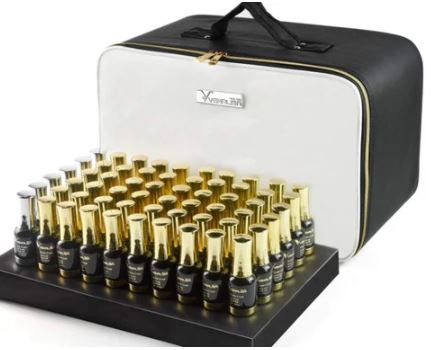
Safety Protocols:
Training should cover safety procedures for handling chemicals, using equipment, and maintaining cleanliness and hygiene in the salon. This includes knowledge of personal protective equipment (PPE) and proper disposal practices.
Infection Control:
Training should emphasize infection prevention techniques, such as hand hygiene, disinfection, and sterilization of tools and equipment.
Client Consultation:
Nail technicians should be trained in effective client consultation, including assessing client needs, identifying contraindications, and managing client expectations.
Client Communication:
Develop strong communication skills to build rapport with clients, discuss nail care routines, recommend aftercare products, and address concerns.
Ethics and Professionalism:
Education and training should instill a sense of professionalism, ethics, and respect for client confidentiality.
Emergency Preparedness:
Nail technicians should receive training on responding to emergencies, including first aid, CPR, and the use of safety equipment.
Regulatory Knowledge:
Stay informed about local and state regulations related to nail salon operation, licensure, and safety compliance.
Record Keeping:
Educate technicians on maintaining accurate records, including client information, appointment schedules, and product usage for safety and regulatory purposes.
Practical Experience:
Hands-on training is essential for developing practical skills, such as nail art, shaping, and application techniques.
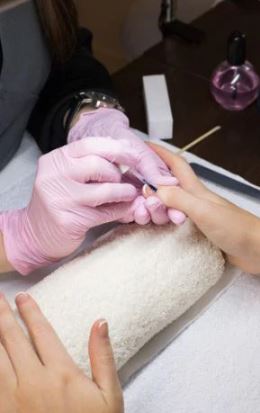
Customer Service:
Training should include customer service skills, as positive interactions with clients are crucial for success.
Environmental Awareness
Teach technicians about environmental responsibility, including proper disposal of chemical waste and recycling practices. Check out our article how to have a green salon.
Education and training are ongoing processes in the nail salon industry.
Nail technicians should regularly update their skills and knowledge to adapt to changing trends and safety standards, providing clients with the best possible experience while maintaining a safe and professional salon environment.
15. Ergonomic Workspace
Creating an ergonomic workspace is essential in the nail salon industry to ensure the comfort, health, and safety of nail technicians.
An ergonomic workspace is designed to reduce the risk of repetitive strain injuries, musculoskeletal disorders, and other workplace-related health issues.
Arrange your workspace to minimize strain on your back, neck, and wrists to prevent long-term musculoskeletal issues.
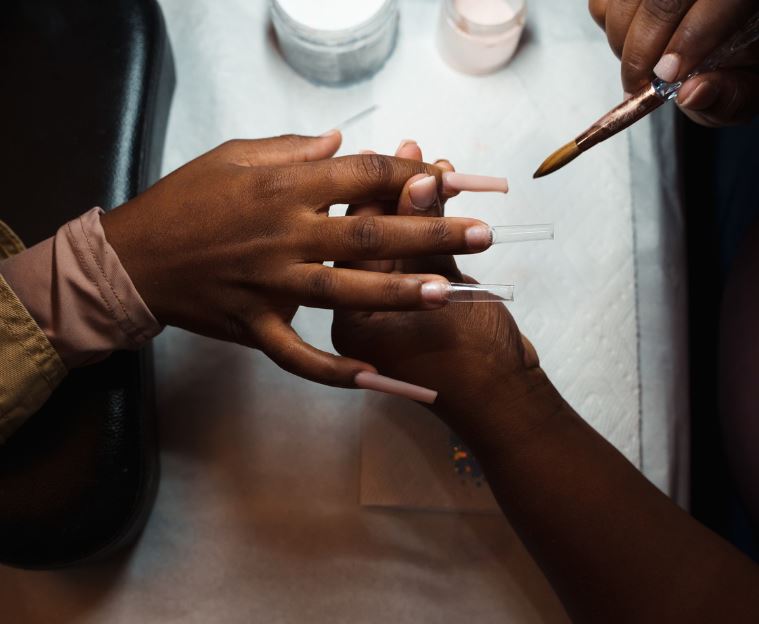
Importance of an ergonomic workspace:
Technician Well-being:
An ergonomic workspace prioritizes the physical well-being of nail technicians. It reduces the risk of developing pain, discomfort, and musculoskeletal issues, such as carpal tunnel syndrome and back pain.
Quality of Work:
Comfortable technicians are more likely to provide high-quality services. An ergonomic workspace allows technicians to focus on their work without distractions from physical discomfort or fatigue.
Safety:
Proper ergonomics also contribute to safety by minimizing the risk of accidents and injuries, such as slips, trips, and falls, which can result from poor workspace design.
Key considerations for an ergonomic workspace in nail salons:
Workstation Design:
Nail stations should be designed with adjustable heights to accommodate different technicians’ preferences and body types. This allows technicians to work at a comfortable level to reduce strain on their backs, necks, and shoulders.
Chair Selection:
Invest in ergonomic chairs with proper lumbar support and adjustability for height and angle. Technicians should be able to sit comfortably and maintain good posture. Encourage the use of footrests to support proper posture and reduce pressure on the lower back and legs.
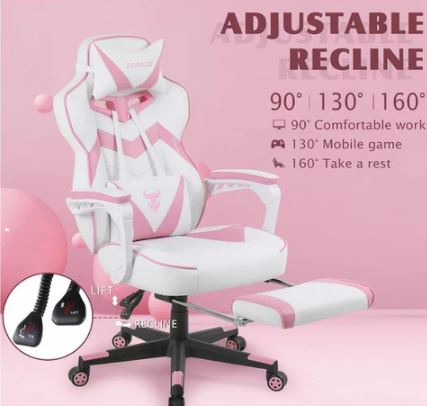
Tool and Equipment Placement:
Position nail tools, such as nail files, clippers, and brushes, within easy reach to minimize excessive reaching or stretching. Use ergonomic hand rests and arm supports to reduce wrist and hand strain during nail services.
Client Seating:
Ensure client chairs are comfortable and provide proper back support. Clients should be able to sit at a comfortable height during nail services. Offer cushioned seating with armrests for clients’ comfort.
Flooring and Mats:
Use anti-fatigue mats at workstations to reduce the impact on technicians’ legs and lower back while standing for extended periods.
Organization and Storage:
Maintain an organized workspace with ample storage for tools and products. Organized stations reduce clutter and make it easier for technicians to access what they need.
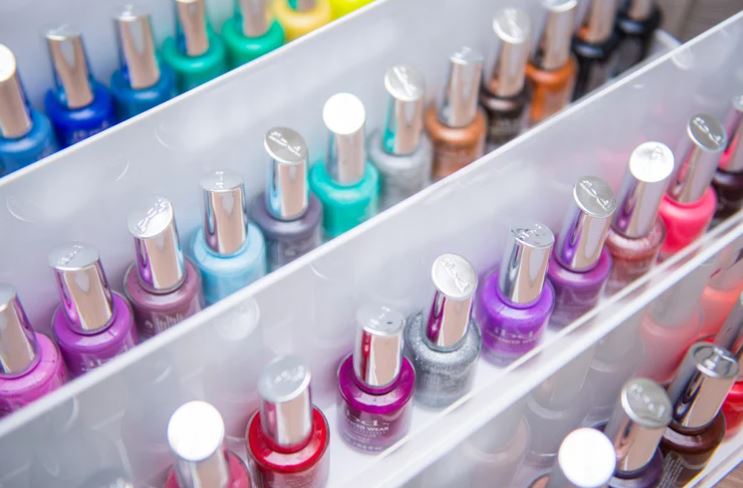
Hand and Arm Support:
Provide wrist rests or pads for technicians to support their wrists and maintain neutral wrist positions while working.
Stretching:
Encourage regular breaks and stretching exercises to help technicians relieve muscle tension and reduce the risk of repetitive strain injuries.
Training and Awareness:
Educate nail technicians about proper posture, ergonomic practices, and the importance of self-care.
Regular Maintenance:
Inspect and maintain salon furniture, equipment, and seating to ensure they remain in good condition and continue to provide ergonomic support.
An ergonomic workspace is an investment in the health and well-being of nail technicians, promoting a safe and comfortable environment.
By prioritizing ergonomics, nail salons can reduce the risk of workplace injuries, enhance the quality of services provided, and create a positive working atmosphere for both technicians and clients.
16. Breaks and Rest
Take regular breaks during your workday to rest your hands and stretch your body.
Breaks and rest are essential components of a healthy and productive work environment in nail salons.
Nail technicians often work long hours, and taking breaks and ensuring adequate rest is crucial to their well-being, job performance, and safety.
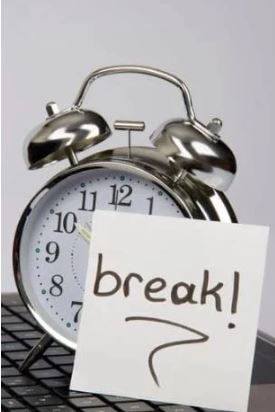
importance of breaks
Physical and Mental Well-being:
Taking regular breaks and getting sufficient rest helps prevent physical and mental fatigue, reducing the risk of burnout and stress-related health issues.
Safety:
Fatigue can impair a technician’s ability to work safely, increasing the risk of accidents and injuries in the salon.
Quality of Work:
Breaks and rest periods allow technicians to recharge, resulting in better concentration, attention to detail, and overall job performance. This translates to higher-quality nail services.
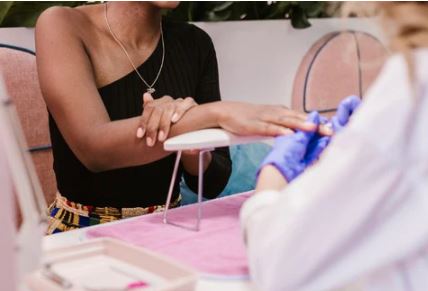
Client Satisfaction:
Rested and rejuvenated technicians are more likely to provide excellent customer service and create a positive experience for clients.
Key considerations for breaks and rest in nail salons:
Scheduled Breaks:
Establish scheduled break times for technicians, taking into account the length of their shifts. Common break durations include 10 to 15-minute breaks for every 2 to 4 hours of work and a longer lunch break.
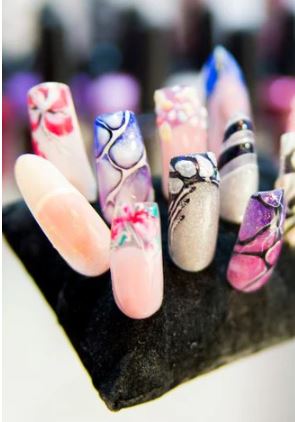
Break Area:
Designate a comfortable break area where technicians can relax, unwind, and eat if necessary. Provide seating, a clean environment and access to a fridge if possible. Encourage technicians to step away from their workstations during breaks to mentally and physically detach from their tasks.
Hydration and Nutrition:
Promote the importance of staying hydrated throughout the workday. Provide access to clean drinking water. Encourage technicians to consume balanced meals and snacks to maintain energy levels.

Stretching and Relaxation:
Encourage technicians to use break times for stretching exercises to relieve muscle tension and maintain flexibility. Offer relaxation techniques, such as deep breathing exercises, to help technicians unwind and reduce stress.
Rotation of Tasks:
Implement a rotation system to allow technicians to switch between tasks, such as filing, polishing, and client services, to prevent monotony and reduce physical strain.
Education and Awareness:
Educate technicians about the importance of breaks and rest in maintaining their health and well-being. Foster a workplace culture that encourages technicians to take breaks without feeling guilty or pressured to work continuously.
Management Support:
Salon owners and managers should lead by example and support a culture of rest and self-care by ensuring that technicians have adequate break times.

Regular Assessments:
Periodically assess the effectiveness of break policies and make adjustments as needed based on feedback and evolving needs.
Legal Compliance:
Ensure that break and rest policies comply with local labor laws and regulations regarding meal and rest breaks. Creating a salon environment that prioritizes breaks and rest contributes to the health, safety, and job satisfaction of nail technicians.
It also enhances the overall quality of services and client experiences, ultimately benefiting the salon’s reputation and success.
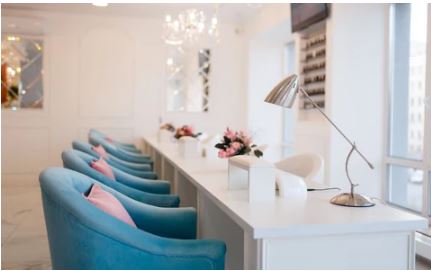
17. No Smoking or Eating
Prohibit smoking, eating, or drinking in your workspace to prevent contamination of nail products. Implementing a strict “No Smoking or Eating” policy in a nail salon is crucial for maintaining a safe, clean, and professional environment.
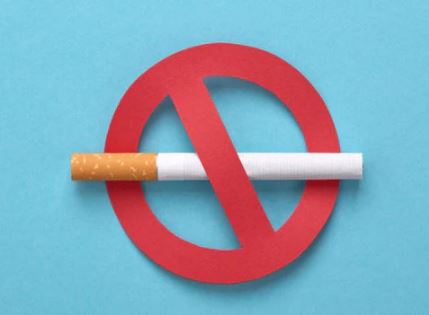
This policy helps protect the health and safety of both nail technicians and clients, as well as the integrity of the salon’s services in the following ways.
Cleanliness and Hygiene:
Smoking and eating in a nail salon can lead to the accumulation of ashes, which may compromise the cleanliness and hygiene of the salon’s workstations and common areas.
Allergen Control:
Some clients and technicians may have allergies to smoke, making it essential to maintain an allergen-free environment.
Fire Safety:
Smoking indoors poses a significant fire hazard, especially in salons where flammable chemicals and materials are present. Prohibiting smoking minimizes this risk.
Professionalism:
Enforcing a no smoking policy reinforces a professional image and sets a high standard for the salon. It shows a commitment to the well-being and comfort of both clients and technicians. Your salon will also smell so much better.
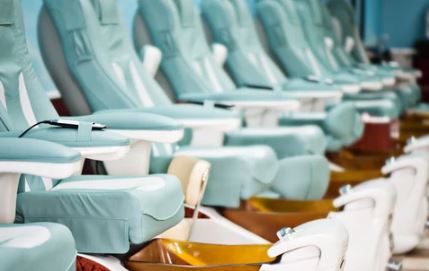
Key considerations for implementing a no smoking or eating policy:
Clear Signage:
Display clear and visible signs at salon entrances and throughout the premises to inform clients and staff of the policy.
Staff Compliance:
Ensure that all salon staff, including technicians and receptionists, are aware of and adhere to the policy. Managers and owners should lead by example.
Enforcement:
Enforce the policy consistently and politely. If clients or staff members violate the policy, gently remind them of the salon’s rules and offer alternative solutions.
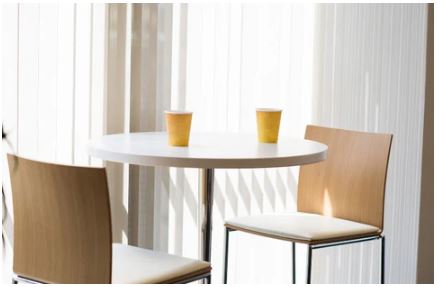
Regular Inspections:
Conduct regular inspections to ensure that the salon remains free from smoking and eating violations. Promptly address any issues that arise.
Customer Service Training:
Train staff in effective communication and conflict resolution to handle situations involving policy violations with professionalism and tact.
Policy Review:
Periodically review and update the policy as needed to adapt to changing circumstances or regulations.
A no smoking or eating policy is a fundamental aspect of maintaining a clean, safe, and professional environment in nail salons. It demonstrates a commitment to the well-being of clients and staff and contributes to the salon’s overall reputation for quality and hygiene.
18. Emergency Exits
Emergency exits are critical components of safety in any workplace, including nail salons. These designated exit routes provide a means for people to quickly and safely evacuate the premises in the event of a fire, natural disaster, or other emergency.
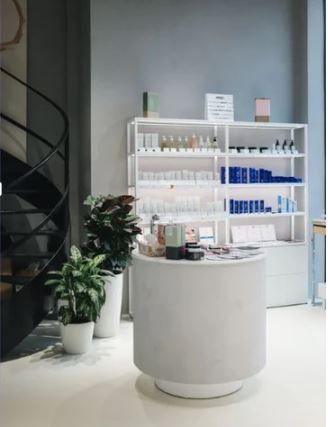
Properly marked and maintained emergency exits are essential for the well-being of both nail technicians and clients.
Importance of emergency exits:
Life Safety:
Emergency exits are designed to save lives. They provide a clear and direct path for evacuating the building in case of fire, chemical spills, power outages, or other emergencies that may pose a threat to occupants.
Preventing Panic:
Clearly marked and well-maintained emergency exits help prevent panic and confusion during an emergency. When people know where to go, they can evacuate calmly and efficiently.
Compliance:
Compliance with building codes and safety regulations often requires the presence of properly marked and maintained emergency exits. Failing to meet these requirements can result in legal and financial consequences.
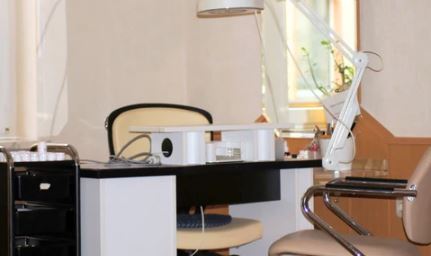
Key considerations for emergency exits in nail salons:
Clear Markings:
Emergency exit routes should be clearly marked with illuminated exit signs. Signs should be visible from all areas of the salon.
Unobstructed Pathways:
Keep exit routes and pathways to exits clear of obstacles, furniture, and equipment. These pathways should be free from clutter at all times.
Accessible Exit Doors:
Exit doors should be easy to open and operate without the need for special knowledge or tools. They should swing in the direction of exit travel.
Emergency Lighting:
Install emergency lighting along exit routes and near exit doors to ensure visibility in case of power outages or low visibility conditions.
Exit Door Hardware:
Use panic bars or other approved exit door hardware that allows easy egress without the need for keys or special knowledge.
Regular Maintenance:
Regularly inspect and maintain exit doors, exit signs, and emergency lighting to ensure they are in good working condition. Address any defects or malfunctions promptly.
Training and Drills:
Conduct regular emergency evacuation drills with all salon staff to ensure that everyone knows the designated exit routes and procedures.
Accessible Exits:
Ensure that emergency exits are accessible to all individuals, including those with disabilities. Provide accommodations such as ramps or wider doorways as needed.
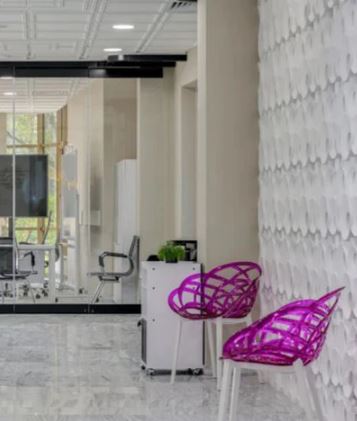
Emergency Exit Maps:
Post emergency exit maps in visible locations throughout the salon, indicating the location of exits and the evacuation route.
Evacuation Plan:
Develop an emergency evacuation plan that outlines specific procedures for different types of emergencies, including fires, chemical spills, or natural disasters.
Assembly Area:
Have a designated assembly area outside the salon where all staff and clients should gather after evacuating. This area should be a safe distance from the building.
Communication:
Establish a clear communication protocol for notifying staff and clients of emergencies and evacuation procedures.
By ensuring that emergency exits are well-maintained and accessible, nail salons can provide a safer environment for everyone inside the premises.
Training and preparation are key to ensuring that all individuals in the salon know how to respond calmly and effectively in the event of an emergency.
19. Client Education
Client education is a vital aspect of safety and professionalism in nail salons. It involves providing clients with information and guidance on various aspects of nail care, services, and hygiene.
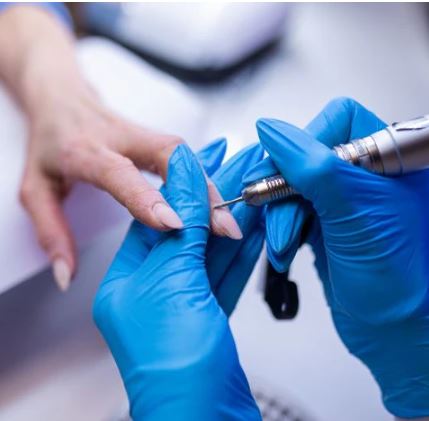
Educating clients not only enhances their overall experience but also helps prevent potential issues and misunderstandings.
Importance of client education:
Health and Safety:
Client education helps ensure that clients understand the importance of proper nail hygiene and safety practices. Informed clients are more likely to follow aftercare instructions and prevent nail-related problems.
Expectation Management:
Educating clients about different nail services, techniques, and products helps manage their expectations. This reduces the likelihood of misunderstandings and ensures clients are satisfied with the results.
Quality Assurance:
Well-informed clients are more likely to make informed decisions about the services they receive, leading to better outcomes and higher service quality.
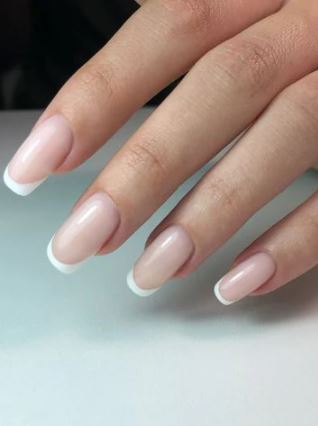
Long-Term Relationships:
Providing clients with valuable information fosters trust and builds long-term relationships. Clients are more likely to return to a salon where they feel they receive expert advice and personalized care.
Key considerations for client education in nail salons:
Initial Consultation:
Begin the education process during the initial client consultation. Ask about their nail history, preferences, and any concerns or allergies.
Service Explanation:
Clearly explain the details of the chosen nail service, including the procedure, products used, and expected outcomes. Discuss any potential risks or aftercare requirements.
Product Knowledge:
Educate clients about the products used in the salon, including their ingredients and potential benefits or risks. Share information about the safety and quality of products.
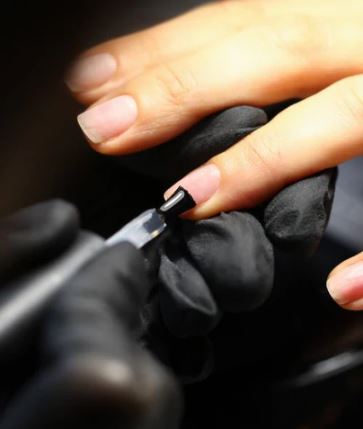
Nail Care Tips:
Offer practical nail care tips, such as proper handwashing techniques, moisturizing routines, and the importance of regular nail maintenance between salon visits.
Aftercare Instructions:
Provide clients with aftercare instructions specific to the service they received. Explain how to protect and maintain their nails to ensure longevity and prevent damage.
Hygiene Awareness:
Emphasize the importance of hygiene and cleanliness. Explain salon sanitation practices and reassure clients about the salon’s commitment to their safety.
Nail Health Information:
Educate clients about common nail health issues, such as fungal infections or nail damage, and provide guidance on prevention and early detection.
Product Recommendations:
Offer product recommendations for at-home nail care, such as nail strengtheners or cuticle oils, based on individual needs. We have a helpful article about products to offer in a nail salon.
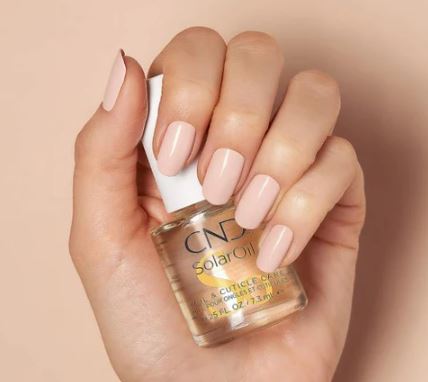
Ask for Questions:
Encourage clients to ask questions and seek clarification on any aspect of their nail care or services. Create an open and welcoming environment for inquiries.
Visual Aids:
Use visual aids, such as diagrams or brochures, to illustrate nail care concepts and procedures effectively.
Regular Updates:
Stay up-to-date with industry trends and safety practices, and share this knowledge with clients during their visits.
Feedback and Communication:
Seek feedback from clients about their experience and whether the information provided was helpful. Use their input to improve your education efforts.
Client education is an ongoing process that empowers clients to make informed decisions about their nail care and hygiene. It demonstrates a commitment to their well-being and satisfaction, enhances their trust in the salon, and contributes to the overall professionalism and success of the business.
In Closing:
In the world of nail technology, prioritizing safety is the foundation of providing exceptional service.
By following these must-know nail tech safety tips, you’ll not only protect yourself and your clients but also build a reputation for professionalism and care.
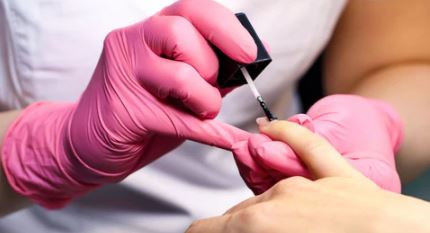
Remember, safety is a continuous commitment, and staying informed and vigilant is key to ensuring a secure and enjoyable experience in your nail salon. Here’s to a thriving and safe journey in the world of nail technology!

